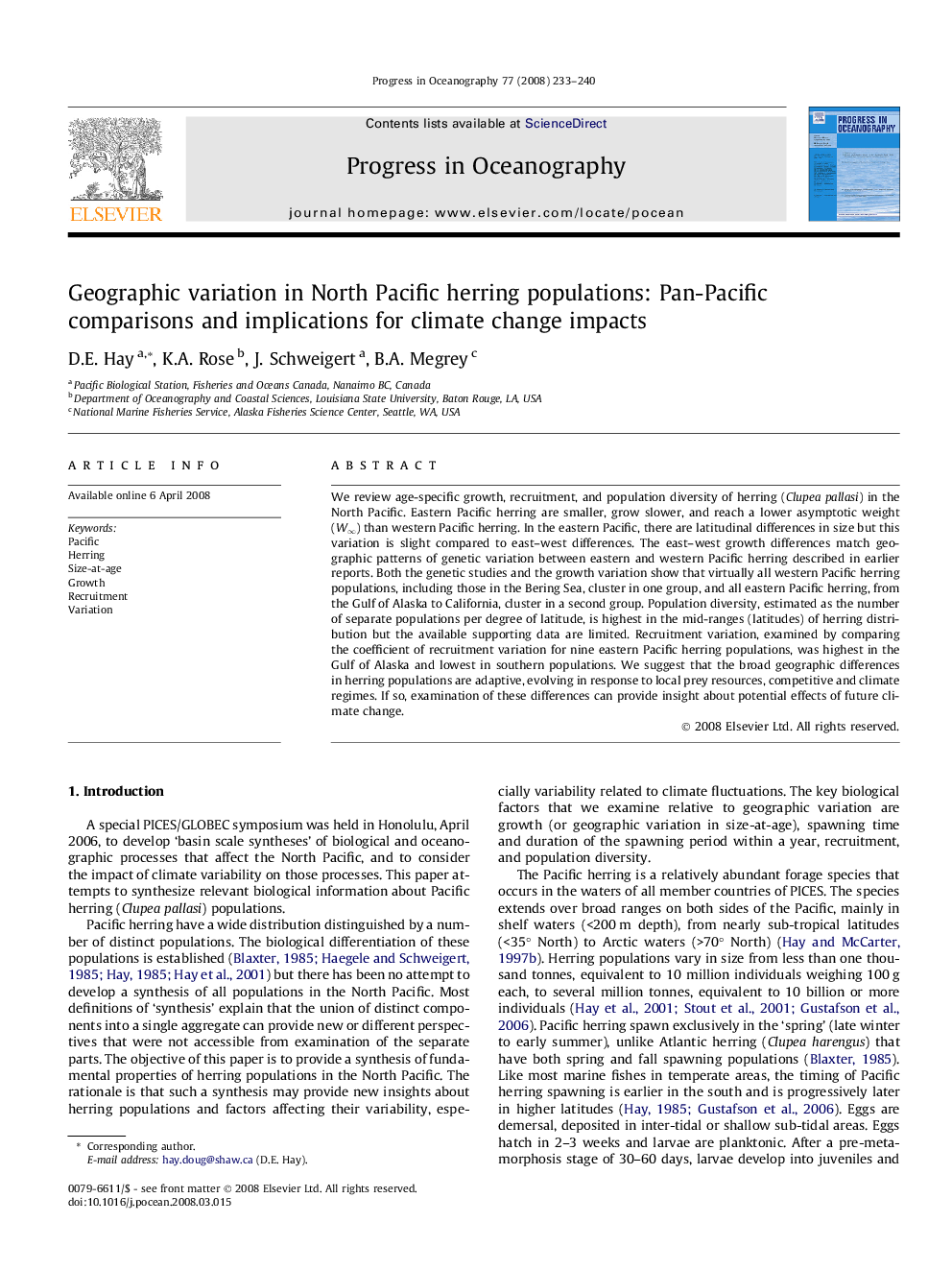| Article ID | Journal | Published Year | Pages | File Type |
|---|---|---|---|---|
| 4553756 | Progress in Oceanography | 2008 | 8 Pages |
We review age-specific growth, recruitment, and population diversity of herring (Clupea pallasi) in the North Pacific. Eastern Pacific herring are smaller, grow slower, and reach a lower asymptotic weight (W∞) than western Pacific herring. In the eastern Pacific, there are latitudinal differences in size but this variation is slight compared to east–west differences. The east–west growth differences match geographic patterns of genetic variation between eastern and western Pacific herring described in earlier reports. Both the genetic studies and the growth variation show that virtually all western Pacific herring populations, including those in the Bering Sea, cluster in one group, and all eastern Pacific herring, from the Gulf of Alaska to California, cluster in a second group. Population diversity, estimated as the number of separate populations per degree of latitude, is highest in the mid-ranges (latitudes) of herring distribution but the available supporting data are limited. Recruitment variation, examined by comparing the coefficient of recruitment variation for nine eastern Pacific herring populations, was highest in the Gulf of Alaska and lowest in southern populations. We suggest that the broad geographic differences in herring populations are adaptive, evolving in response to local prey resources, competitive and climate regimes. If so, examination of these differences can provide insight about potential effects of future climate change.
